Dorsett has been sidelined since January 3 with a broken fibula. The gritty forward has three goals, two assists and 103 PIMs in 37 games this year.
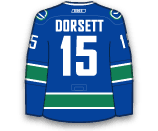
Dorsett has been sidelined since January 3 with a broken fibula. The gritty forward has three goals, two assists and 103 PIMs in 37 games this year.

Zuccarello said he suffered the injury blocking a shot during Norway’s 3-1 loss to Austria Sunday in a Group B match at the 2014 Sochi Olympics. Zuccarello leads the Rangers with 28 assists and 43 points in 58 games this season. “It’s tough, but it’s part of the game so you kind of have to just go with it,” Zuccarello said Friday, wearing a black brace on his left hand. “But obviously it’s nothing you wanted to happen over there. It’s a tough one.”

Stamkos underwent another set of X-rays this afternoon. The bone is reportedly healing very well but the Lightning are playing it smart. Stamkos is expected to return when the Lightning get back to Tampa Bay on March 6 vs. the Sabres.

The Predators announced that Rinne had been cleared for the next step of his recovery after meeting with doctors earlier Monday. Coach Barry Trotz said a meeting was planned for later Monday to set a weekly plan for Rinne. The goalie has been sidelined since arthroscopic surgery on his left hip Oct. 24 as a result of a bacterial infection. The infection developed in the same hip surgically repaired May 9 after last season. Rinne started practising Feb. 19 and has worked a bit more each day. Rinne is 4-4-1 in the nine games he has played this season.
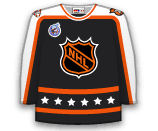
After the brief rest, Stamkos returned to the ice last week along with the rest of his non-Olympian teammates looking as good as ever 14 weeks after suffering a broken right tibia. Though he pushed hard to be ready to return before the break and represent Canada at the Olympics, a CT scan performed on Feb. 5 revealed the bone was not quite healed enough to clear his return. "It did feel good (on Feb. 5), but it feels even better now," Stamkos said. "Maybe I wasn't as far along as I thought, knowing how much better it has felt now that I have kept working on it and taking a couple of days off. It's just going to continually get better, and that's positive knowing it's doing that.''

Weiss has been skating for several weeks but isn’t ready for the fast pace, high intensity and full contact of a game, so he did not play with the Griffins on Sunday, as was originally planned. “I practiced twice last week with the (Plymouth) Whalers and three times (this week) with the (Red Wings), so I’m starting to feel really good but it hasn’t been that much practice time,” Weiss said. Weiss didn’t rule out being cleared for the first game following the Olympic break, Wednesday at Montreal. “That’s what we’re shooting for,” Weiss said. “Obviously, that’s not going to be my decision. I might still have to play a game or two (in Grand Rapids) next week. By then I’ll be more ready to play a game.”
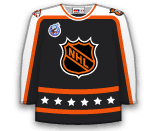
Franzen has missed 23 of the last 24 games with a concussion. He returned for a single game on January 26 vs. Florida, but missed the next six games with lingering concussion-like symptoms. Getting Franzen back would be huge for the Red Wings who will be without Henrik Zetterberg for the next eight weeks.

Tyutin, 30, has four goals and 20 assists with 30 penalty minutes and a plus-6 rating in 53 games with the Blue Jackets this season. Tyutin had four penalty minutes and was plus-1 in five games at this year's Olympics. Tim Erixon will likely be recalled and fill-in for Tyutin on Thursday.

Gaborik has been out since December 21 with a broken collarbone. It was his first game back after missing five weeks with a knee injury and he was injured once again. The injuries have limited him to just 18 games this season, but the Olympic break allowed him to get healthy without missing anymore time. There is no word as to where he will slot into the lineup and who will get demoted, however he will likely land on a line with Artem Anisimov as his pivot. Gabo has five goals and seven assists (12 points) in 18 games.
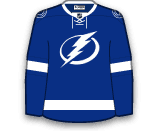
There is no timetable for Barkov's return, but with only two months left in the regular season, he is expected to miss multiple weeks, his fantasy value heading forward is extremely limited. He has been excellent posting eight goals and 16 assists (24 points) in 54 games this season. In deep keeper leagues and dynasty leagues, Barkov appears to have great value and a bright future. Nick Bjugstad, the Panthers' other impressive rookie center, appears set to fill-in for Barkov and center the line with Sean Bergenheim and Brad Boyes.

Couture confirmed that only an unexpected occurrence would keep him out of the Sharks’ next game, on Thursday against the Flyers. Couture missed the last 16 games with a right hand injury, and he still wraps it for practice. He hurt himself on December 19 in Los Angeles, played through it for nearly three weeks, and eventually had surgery on January 8. “I’m ready to go in three or four days, whatever it is. Feels good as its felt in three months,” he said. Couture has 14 goals, 21 assists (35 points) and a plus-13 rating in 43 games this season.

With John Tavares out for the rest of the season, Nielsen is expected to become the Islanders top centre, however they will be without him as well until he fully recovers from a broken hand. Nielsen should be back by this time next week.

It’s believed that Zetterberg will need eight weeks to recover, which means he could return during the first round of the playoffs, if the Red Wings qualify. Zetterberg, will be placed on long-term injured reserve. Zetterberg has been plagued by back issues for several years. He missed 11 games in December due to a slightly herniated disc. The issue caused him to sit out two more games in January. He played just one game for Sweden in the Olympics before withdrawing last Friday due to severe back pain, which he said was "20 times worse" than anything he'd ever experienced.

McCormick has not played since December 14 because of a broken finger that he suffered vs. the Flames. He has one goal and four assists in 25 games this season, while averaging only 8:09 TOI per game.

Myers missed the Sabres last two games before the Olympic break with a knee injury that he suffered on February 3 vs. Edmonton. Myers has just one assist with an ugly minus-11 in his last eight games. He should see his regular 20-plus minutes in his return on Tuesday.

Moulson missed the last four games before the Olympic break with an upper-body injury. Since being traded to Buffalo from New York, Moulson has tallied nine goals and 15 assists (24 points) in 40 games. Moulson remains a topic of trade rumours as the trade deadline draws near. Being dealt from a low-scoring Sabres team to a playoff contender should help boost his fantasy numbers.

McQuaid hasn't played since January 19, when he left the Bruins' shootout loss against the Blackhawks. He was termed day-to-day at the time, but the days have turned into over a month at this point. Since the team got back to work, McQuaid has been on the ice with his teammates. Taking proper caution, the team didn't want him skating during the break because they wanted to be able to monitor his progress. Skating for the third straight day, McQuaid said that he continues to progress. The Bruins' third-pairing blueliner has missed a combined 27 games this season due to multiple lower-body injuries, further building his reputation as something of an injury-prone player.
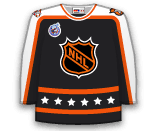
Tavares may need surgery, but a final decision won’t be made until Tavares returns to Long Island from Sochi. He is staying with Canada through its final two games of the Olympics to attend the medal ceremony. Tavares, the Islanders captain, leads the team with 66 points. In his four-plus seasons since joining the Islanders as the No. 1 overall pick in the 2009 draft, Tavares has missed only four games, including one this season with a minor hip injury.

Tavares suffered a knee injury during Wednesday's 2-1 win over Lativa and did not return. There is no word on the severity of the knee injury, but it is expected to keep him sidelined for the remainder of the tournament. His injury means that Matt Duchene will slide into the lineup permanently. The injury did not look good originally and could carry into his season with the Islanders.

Elias missed Tuesday's qualification game against Slovakia with an illness, but will be back in the lineup this afternoon. He will centre the third line with Martin Erat and Jakub Voracek on his wings.

The NHL injury report is updated daily so that you can see the latest injury news ahead of puck drop in any of today’s matchups. Seeing timely updates to the NHL injury report can make a major impact on your daily fantasy sports picks and wagers on a particular game. All information provided on the NHL injury report is provided directly by the NHL and each respective franchise to ensure accuracy.
While the minimum amount of time spent on the injured reserve list is seven calendar days, there is no maximum amount of time that a player can be placed on the injured reserve list. If a player is set to be sidelined for longer than 24 calendar days or 10 NHL games, then a club may opt to place them on the long-term injured reserve instead. This allows franchises with the ability to exceed the salary cap while a player is placed on this reserve list.
No injury recovery timeline is the same as another as there are several factors that go into the rehab process for a player being affected by injury. Factors include but are not limited to, injury severity, player injury/medical history, age, as well as the location of the injury. Some injuries are able to clear up in a matter of days, while others may take an athlete out of action for the entirety of a season.